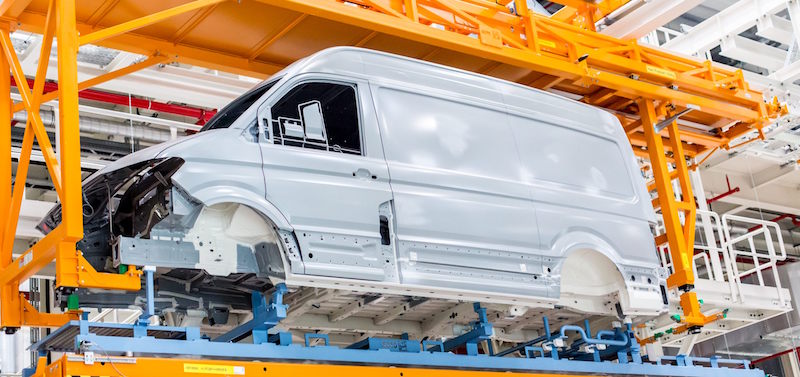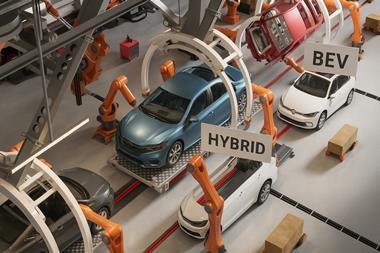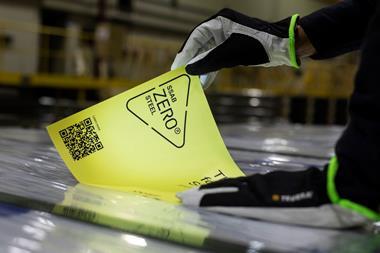As demand for light commercial vehicles grows, Volkswagen sees its new facility in Poland as a laboratory for future LCV manufacturing operations with 70% of production tailored to customer specification
 The gala opening of VW’s new production facility at Wrzesnia revealed a very impressive, state-of-the-art factory, albeit at the time producing just 20 vehicles per day. At the start of the production ramp-up phase, with everything being brand new (production operations and the vehicle itself), each step was being carefully put through its paces and assessed.
The gala opening of VW’s new production facility at Wrzesnia revealed a very impressive, state-of-the-art factory, albeit at the time producing just 20 vehicles per day. At the start of the production ramp-up phase, with everything being brand new (production operations and the vehicle itself), each step was being carefully put through its paces and assessed.
The Crafter van being produced at Wrzesnia is also a brand new platform (the previous version being supplied by Mercedes) designed from scratch by VW to take advantage of a booming LCV market that has been driven by the rapid growth in home deliveries as a result of the boom in online retailing.

Dr Eckhard Scholz, chairman of the board of management of Volkswagen Commercial Vehicles, said simply that to build the new Crafter required a new factory. This was largely due to the size of the vehicle – measuring up to 7m in length and over 2.7m high depending on the variant – it’s a big platform requiring suitably scaled production facilities.
Scholz explained that the development of the new van was very much customer driven and that 70% of production will be tailored and built to customer orders and specification. Developing this approach, he said will see Wrzesnia act as a ‘laboratory’ for future LCV production operations at other plants.
According to Jens Ocksen, chairman of the board of management of Volkswagen Poznań, after the first year of the ramp-up, capacity will reach 50-60,000 units per year, requiring a second shift to be added to production operations. There might even be the need for a third shift if demand is higher than expected. The official maximum capacity for the plant is 100,000 vans per year and by 2019 Wrzesnia will be offering an impressive 69 variants of the Crafter.
Dedicated section for special buildsOffering multiple options and variants is not uncommon in the commercial vehicle sector, but the plant has a special CARs section that carries out the final build stages for customers with special requirements, such as emergency services, utilities companies, etc.
[sam_ad id=17 codes='true']
A quick tour of the bodyshop revealed little detail but it is a nonetheless impressive operation. Covering an area the size of 23 football pitches, it has 4km of lines that are split between building open and closed-bodied models. Currently, press parts are sourced from an outside supplier. Operations in the bodyshop are 68% automated, with 430 Kuka robots performing welding, adhesive application (requiring around 100 metres of adhesive per vehicle) and materials handling. Spot welding is the predominant joining method but laser brazing is used to attach the roof panels. There are also a number of manual welding stations for building smaller sub-assemblies.
As is often the case, the paintshop was off-limits to visitors, but we were told it is divided over four levels and has lines totalling 6km in length. Automation here is at 65% with 94 robots performing the paint related operations. The plant offers eight basic and 53 special colours for the Crafter.
Change of direction in main assemblyMain assembly is divided into seven lines with 192 stages. Cockpit pre-assembly is completed at line-side along with quality checks prior to installation. Windscreen fitment is automated. One interesting part of the assembly process involves turning the (closed model) van bodies so they are at 90° to the line direction. This is to allow the large rear doors to be attached; it is said to be a more efficient method, offering better ergonomics for the assembly workers when handling and fitting such large panels. This operation is carried out with the assembly workers on a raised platform that brings their work-floor level to that of the van bed. For powertrain marriage, braking, suspension and under-body component fitment the bodies are transferred to overhead cradles.
Sustainable productionFollowing the inauguration event that AMS attended, VW supplied more information on the plant’s sustainability programmes. A lot of consideration was given during the building process to environmental protection and sustainability. “We have implemented a large number of innovative solutions,” says Jens Ocken, responsible for the Wrzesnia operation. “The plant in Wrzesnia is a role model for European transporter construction – state-of-the-art technology yet environmentally efficient at the same time.”
• Size of plant: 220 hectares (2.2 sq.km)• Planned production volume: 100,000 cars annually = 17 vehicles per hour = approx. 380 vehicles per day• Vehicles: 69 Crafter derivatives; cargo volumes up to 18.4m3; maximum cargo compartment height of 2,196mm; vehicle length up to 7,391mm; height up to 2,798mm; max. gross weight of 5.5 metric tons• Planned workforce: Around 3,000 employees in a three-shift system• Investment: €800m• Suppliers: 45 from Poland (7 from the region)
The production operations are also designed to optimise energy efficiency. For example the laser welding process (connecting the roof to the vehicle body) has a positive impact on energy consumption.
The paintshop, normally one of the high energy-consumption areas, has also seen the implementation of energy efficient technologies. The 36 paint-application robots use high-rotation atomisers and colour changers that are said to require significantly less paint than in conventional systems.
Using Durr's ‘EcoDryScrubber’ procedure (to clean the air), is said to deliver a 60% saving in energy consumption in the paint cabin, requiring no water or chemicals and reducing the volume of exhaust air. The new ‘EcoSmart AC’ procedure is additionally put to use for energy-optimised air conditioning in the cabin. Automatic bodywork driers are furthermore equipped with energy-saving heat recycling technology.
The entire new plant, its green areas, social amenities and production facilities were certified by the German Sustainable Building Council (DGNB) – making it the first automobile site in the world to receive this honour. Factors audited for this award were the ecological and economic quality as well as the socio-cultural, technical and process-related aspects.








































